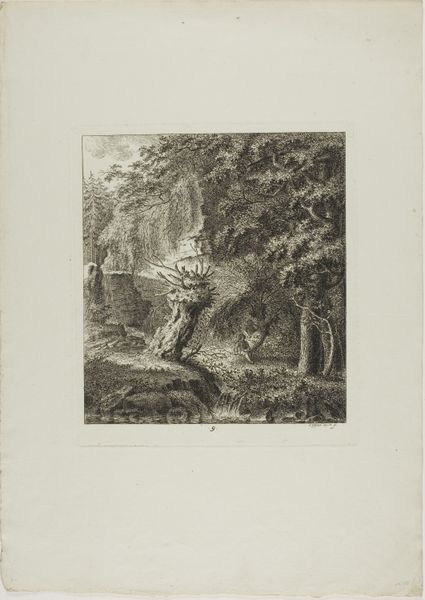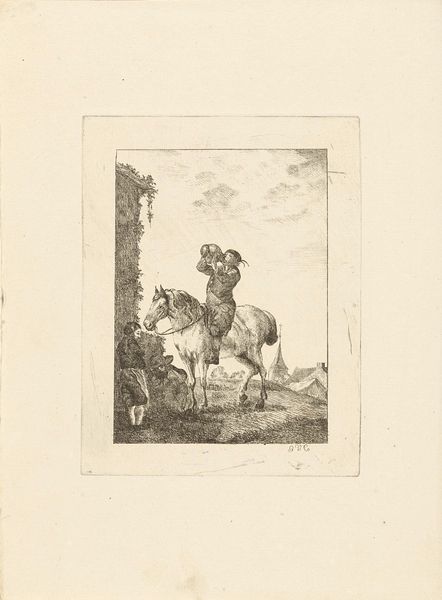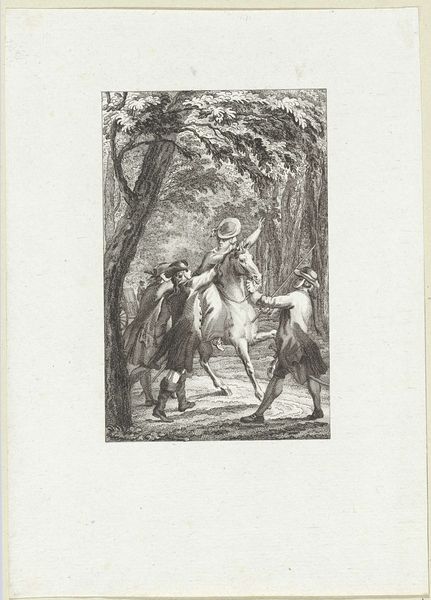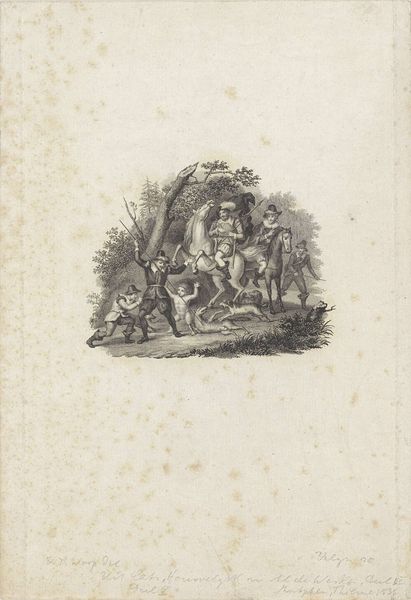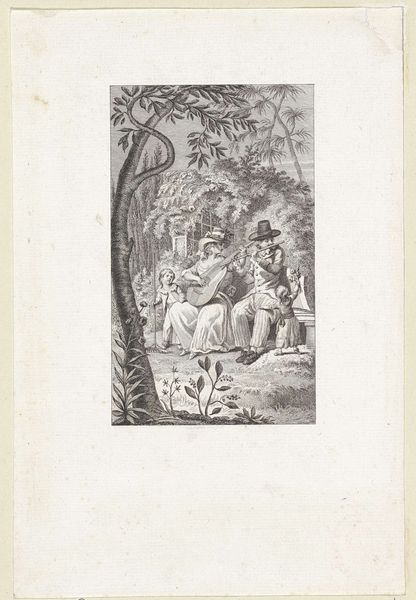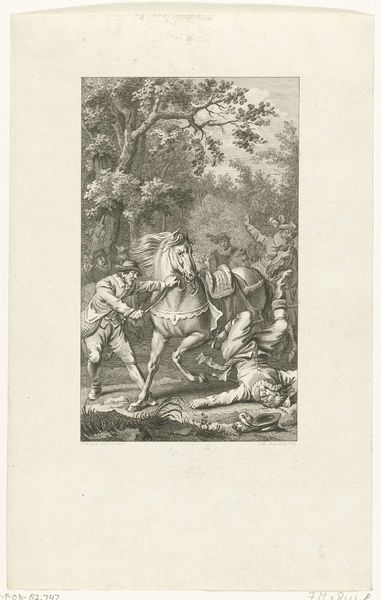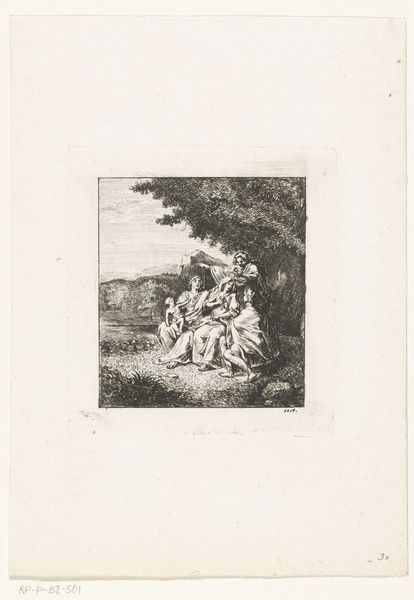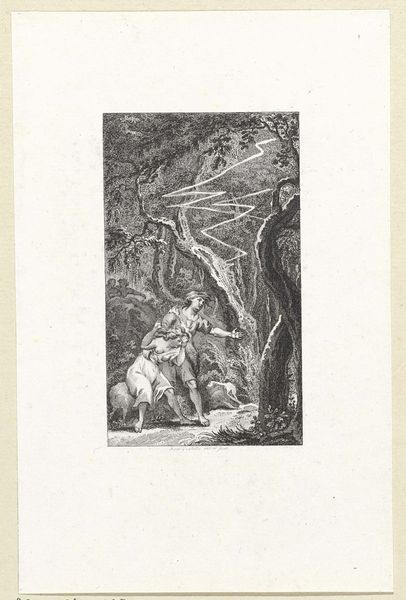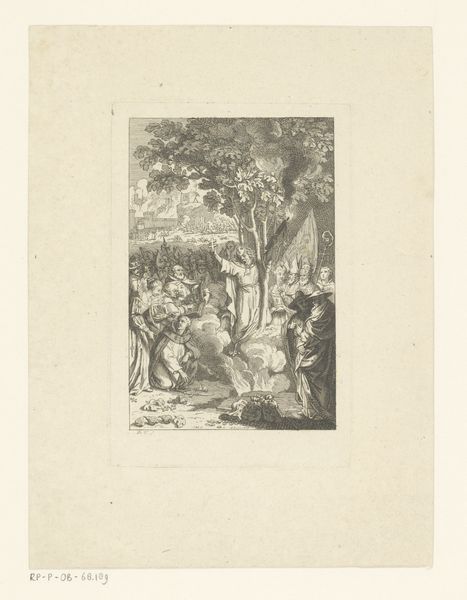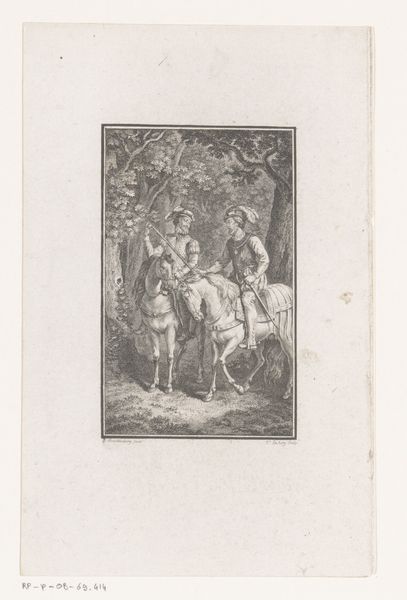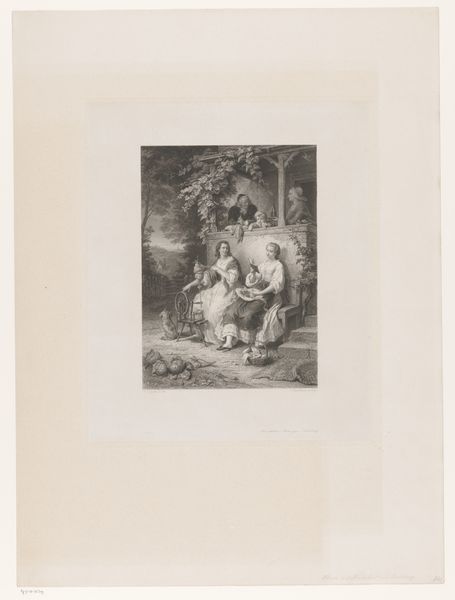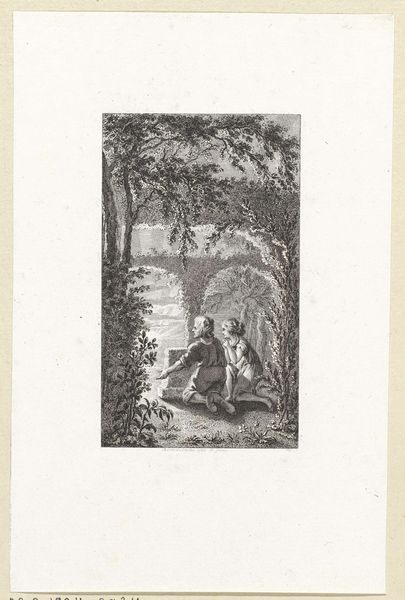
Een valkenier toont een dame te paard zijn vogel 1830 - 1845
0:00
0:00
print, engraving
# print
#
old engraving style
#
landscape
#
figuration
#
romanticism
#
genre-painting
#
engraving
Dimensions: height 247 mm, width 158 mm
Copyright: Rijks Museum: Open Domain
Curator: This engraving, crafted by Henricus Wilhelmus Couwenberg between 1830 and 1845, is titled "A Falconer Showing a Lady on Horseback His Bird." The print offers a glimpse into a leisure activity of the era. Editor: Immediately, the stark contrast in tones creates a sense of drama. The dark, dense forest presses in on the figures, who are caught in a bright clearing. Curator: Indeed. The use of engraving allows for very fine detail, particularly in the rendering of textures—look closely at the lady’s gown, or the horse’s musculature. These minute gradations articulate form. The composition follows a gentle diagonal, with the falconer providing a grounding point for the movement. Editor: Absolutely, but this "leisure" is loaded. Falconry was typically reserved for nobility, highlighting social hierarchies. And while the lady is centered, her passivity, as a rider, underscores gender dynamics of the time, with the falconer taking a dominant role of expertise. It also romanticizes their authority through a scene set in nature, rather than in an official context. Curator: The subject, of course, recalls elements of Romanticism—an idealized relationship to nature and a sense of refined sensibility. The formal choices, such as the calculated use of light and dark, guide our focus and contribute to the scene's genteel narrative. Editor: Precisely. It’s not simply a scene of nature, but rather one in which roles and status are on display. Think of the falcon: is it a symbol of nature, or a tool of class power? Even seemingly straightforward compositions can carry complex messaging about societal norms. Curator: A perspective often neglected when we focus too exclusively on stylistic nuance and visual components, perhaps? Editor: Exactly. Approaching this engraving intersectionally provides access into deeper social understandings about class, gender and the controlling of natural forces in that moment. Curator: Thank you. Seeing through both lenses—structure and situation—allows a greater engagement with this intriguing scene. Editor: I wholeheartedly concur.
Comments
No comments
Be the first to comment and join the conversation on the ultimate creative platform.
